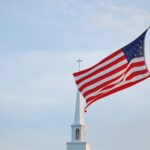BALTIMORE (RNS) The standoff between the White House and the nation’s Catholic bishops over gay marriage and other hot-button issues may be easing after a quiet Oval Office meeting between President Obama and the head of the U.S. Conference of Catholic Bishops.
Still, Archbishop Timothy Dolan of New York and other prelates made it clear at their annual meeting on Monday (Nov. 14) that they still see an array of threats that pose an imminent danger to the church’s freedom unless sufficient religious exemptions are granted.
Dolan, president of the bishops’ conference, described his Nov. 8 meeting with Obama—first reported on Saturday by the National Catholic Reporter—as “extraordinarily friendly.”
“It was very candid. I would say there were areas of agreement and disagreement,” Dolan told reporters at the bishops’ gathering.
“But I would say this: that I found the president of the United States to be very open to the sensitivities of the Catholic community that were worried about an intrusion into religious liberty.”
Dolan said Obama was “very sensitive” to the bishops’ concerns over gay marriage and insurance mandates to provide artificial birth control coverage as part of the new health care reform law.
“He was very ardent in his desire to assure me that this is something he will look long and hard at. And I left there feeling a bit more at peace about this issue than when I entered.”
That sentiment, coming after Dolan’s first face-to-face meeting with Obama since he was elected to lead the bishops last year, marks a sea change from tense relations between the U.S. hierarchy and the administration.
Beyond the administration’s decision not to enforce a federal ban against gay marriage, the bishops are worried that state efforts to legalize gay marriage or allow civil unions will force them to choose between the law and their moral beliefs.
That conflict grew deeper in August when the Department of Health and Human Services announced regulations that would require all health insurance policies to provide contraception at no extra cost. Catholic bishops and others say an exemption for religious groups is so narrow as to be meaningless.
The bishops say the decisions represent a pervasive hostility to religious groups, and they’ve established a new Committee for Religious Liberty to defend the church’s interests in Washington.
The policy jousting has been matched by escalating rhetorical broadsides from the bishops. Cardinal Francis George of Chicago, Dolan’s immediate predecessor as head of the bishops’ conference, has called Obama’s White House “the most secularist administration in history.”
Last week, Auxiliary Bishop James D. Conley of Denver told an anti-abortion group in Dallas that he believes the U.S. “is becoming what I would call an ‘atheocracy’—a society that is actively hostile to religious faith and religious believers.”
The fight over religious freedom is a central theme of the bishops’ fall meeting. On Monday, Bishop William E. Lori of Bridgeport, Conn., head of the new religious liberty committee, told the bishops that “both law and culture are indeed establishing un-religion as the religion of the land.”
“This and more have led to dramatic and immediate threats to religious liberty across our land,” Lori warned.
But Lori and Dolan both pointed out that they believe the church is facing strong cultural headwinds, not just a hostile administration.
“We see in our culture a drive to neuter religion,” Dolan said, warning of a campaign backed by “well-financed, well-oiled sectors, to push religion back into the sacristy.”
And, referring to the church’s own flock, he added, “We have to realize that a whole chunk of our people are not with us.”
In his opening speech Monday, Dolan issued a “mea culpa” of sorts for the church’s own contribution to their recent decline.
“With contrition and deep regret, we acknowledge that the members of the church—starting with us—are sinners, indeed,” Dolan told the 300 bishops. “One thing both sides of the Catholic ideological spectrum at last agree upon is the answer to this question: just who is to blame for people getting mad at or leaving the church?”
“Their unanimous answer?” He looked out at the gathering and spread his arms with a smile, saying, “Nice to meet you!”



